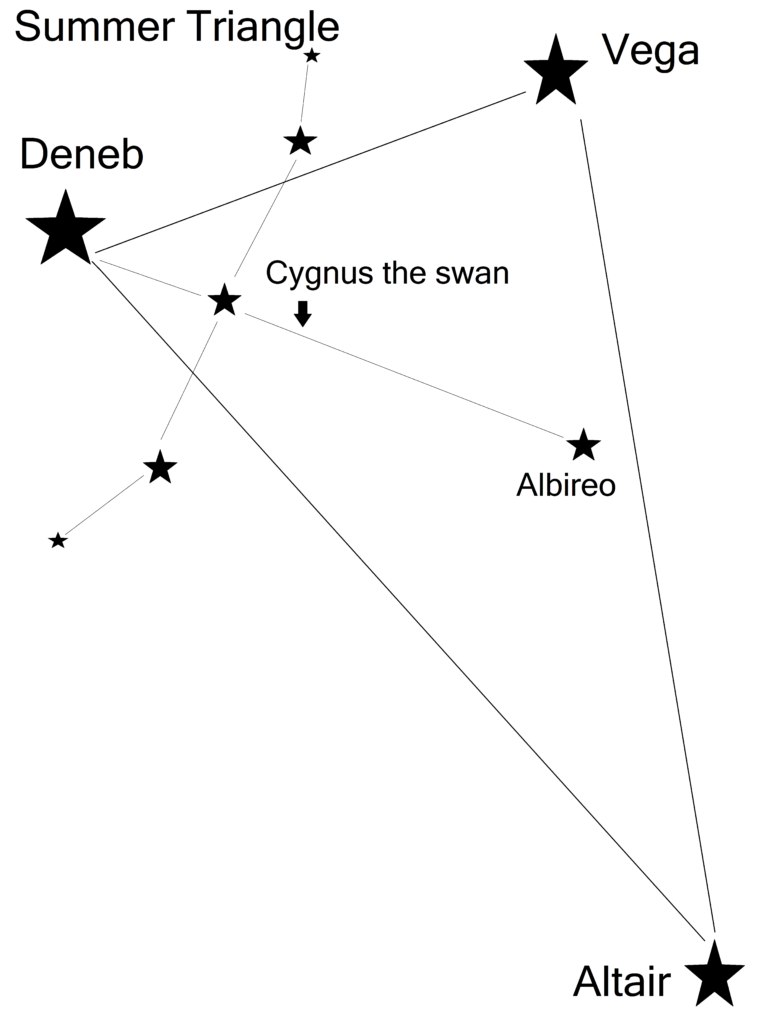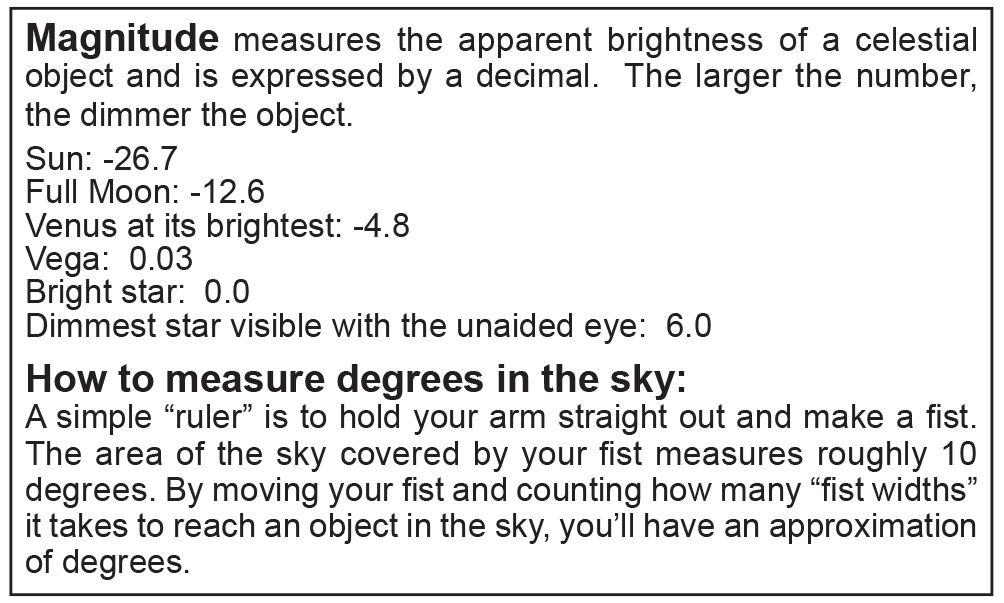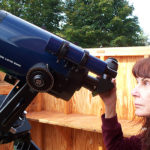The Night Sky: Summer Triangle
By Dee Sharples–
 The Summer Triangle, an easy to locate asterism, is visible in the late August sky and throughout September. An asterism is a group of stars that forms a shape in the sky but is not one of the official constellations. The Summer Triangle is made up of three bright stars from three different constellations forming a large triangle in the sky and resembling the shape of a giant slice of pizza.
The Summer Triangle, an easy to locate asterism, is visible in the late August sky and throughout September. An asterism is a group of stars that forms a shape in the sky but is not one of the official constellations. The Summer Triangle is made up of three bright stars from three different constellations forming a large triangle in the sky and resembling the shape of a giant slice of pizza.
Go outside in the evening just as the sky gets dark and face south. Look almost straight up but toward the west to find Vega (magnitude 0.03), the brightest of the three stars and part of the constellation Lyra the lyre. Higher than Vega and almost three fist-widths to its left is the slightly dimmer star Deneb (magnitude 1.3) part of the constellation Cygnus the swan. Draw an imaginary line from Vega and Deneb down toward the horizon to find Altair, the third star in the Summer Triangle. Altair (magnitude 0.8) is part of the constellation Aquila the eagle.
As the sky darkens the dimmer stars of Cygnus will appear creating the outline of a swan soaring high across the sky. Deneb is the tail of the swan, five dimmer stars make up its outstretched wings, and the head of the swan is represented by the magnitude 3.0 double star Albireo.

When viewed with the naked eye, Albireo looks like one star but through a telescope it resolves into two separate stars. One is a hotter yellow star shining at magnitude 3.1 and the other is a cooler distinctly blue star of magnitude 5.1. Check out this NASA website for a photo of this beautiful double star: https://apod.nasa.gov/apod/ap050830.html
The September moon will be a great guide to finding the planet Jupiter in the night sky. On the 13th a slim crescent moon will pass only 4 degrees to Jupiter’s upper right at 10:00 PM. Look toward the southwest to spot the planet looking like a bright star at magnitude -1.9.
The planet Venus will be at its most brilliant just as the sun sets on September 21st shining at a blazing magnitude -4.8. However, it will lie very close to the horizon so you’ll need to find an area where trees and buildings won’t block your view, but there will be no mistaking Venus when you spot it.
On August 12th, the Parker Solar Probe was launched from Cape Canaveral. This is the first mission designed to send a spacecraft to actually “touch” the sun. The spacecraft is about the size of a small car and will eventually enter the sun’s atmosphere and descend to within 3.8 million miles of its surface.
The Parker probe will have its first meeting with the sun on November 5th, and over the next seven years it will complete a total of 24 flybys. One of the mysteries it hopes to solve is why the sun’s corona, its upper atmosphere, is much hotter than its gaseous “surface” below.
The last weeks of summer are already here with the autumn equinox occurring at 9:54 PM on Saturday, September 22nd. Although it’s the first official day of autumn, you can still look forward to many pleasant evenings viewing the night sky.
Strasenburgh Planetarium : Strasenburgh Planetarium in Rochester has public observing every clear Saturday night. Members of the Astronomy Section of the Rochester Academy of Science will open the two telescopes on the roof of the planetarium. This free event takes place from dark to 10:30 PM. You will need to climb 60 steps to the telescope deck. The entrance is just to the right of the back door of the planetarium. Call the planetarium after 7:30 PM at 585-697-1945 to confirm the telescope will be open that night. If it’s cloudy, observing will be cancelled.

Dee Sharples is an amateur astronomer who enjoys observing planets, star clusters and the Moon through her telescope. She is a member of ASRAS (Astronomy Section of the Rochester Academy of Science) and records “Dee’s Sky This Month”, describing what can be seen in the sky, on the ASRAS website, rochesterastronomy.org. Watch for her monthly Owl feature to learn more about the night sky.